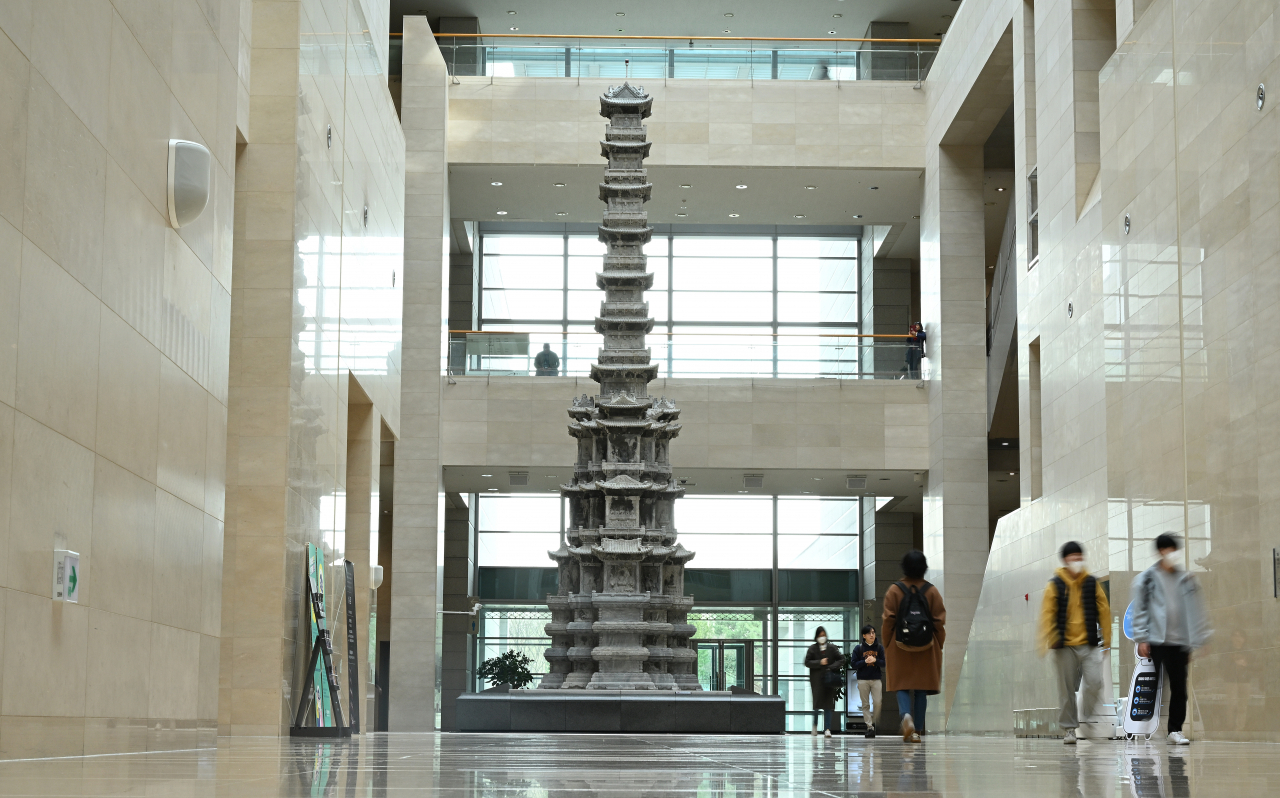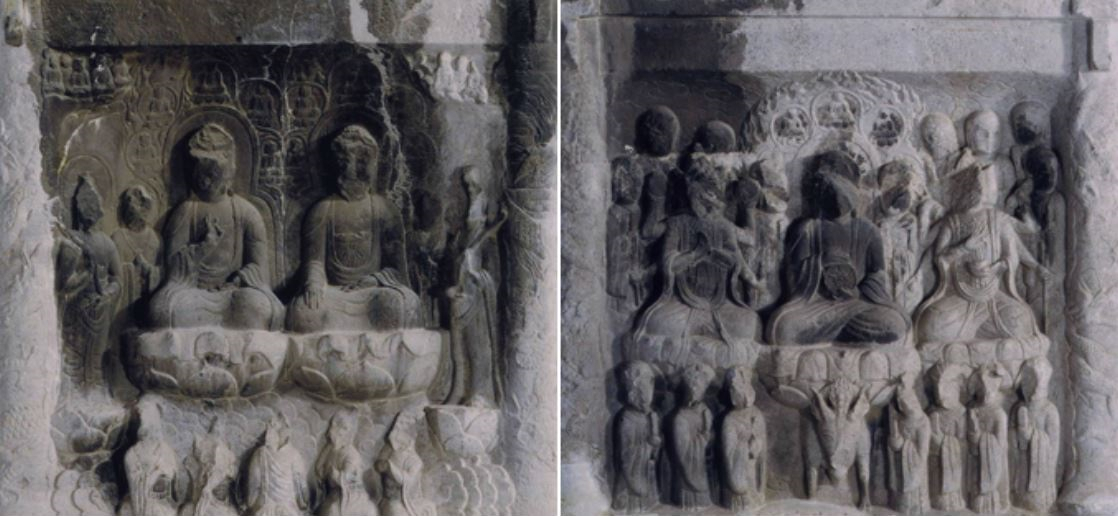[Stories of Artifacts] 14th century pagoda bears witness to Korea's history
By Kim Hae-yeonPublished : May 8, 2023 - 17:59

There are different ways of feeling the passage of time -- looking at the leaves changing colors to seeing fine wrinkles around a loved one's eyes.
The 10-story stone pagoda in the center of the first floor of the National Museum of Korea, one can feel the country's history embodied in the stone structure.
Towering 13.5 meters high, the pagoda was built at a temple called Gyeongcheonsa in 1348, during the reign of King Chungmok of the Goryeo Kingdom, according to the inscription on the pagoda.
It is made of marble, an unusual feature since most Buddhist pagodas in Korea are made with granite. On top of the three-tier base, the lower three stories are elaborate 20-sided polygons in the shape of a stepped square, while the remaining seven stories are square shaped.
Stepping closer to the pagoda, you can see delicately carved images embedded on each tier.
At the base, lions, dragons and lotus flowers are carved with partial depictions of "Journey to the West," a 16th-century Chinese novel about a Tang dynasty Buddhist monk's travels to Central Asia and India to obtain sacred Buddhist texts. From the second to the fourth stories, scenes show people offering Buddhist services in great detail.
The fifth to the 10th stories features images of Bodhisattva practicing asceticism, eventually becoming a Buddha in the in the 10th story.

"There are very few stone pagodas in history where such figures and shapes are so densely inscribed," Shin So-yeon, a senior researcher at the National Museum of Korea, told The Korea Herald. "The layers tell the journey of all living beings trying to seek enlightenment, depicting the core Buddhist philosophy."
There are multiple studies that suggest that a type of "instructive manual" had existed in the Goryeo-era for building the pagoda with this type of narrative, which was passed down generations, according to Shin.
"Some 120 years later, another pagoda of a similar form was built at Wongaksa during Joseon era," said Shin.
Wongaksa's 10-story pagoda, also a National Treasure, is currently located at Tapgol Park in Jongno, Seoul.
Built in 1467 on King Sejo's order, it was originally a 13-story pagoda and contained sarira and a book of ancient Buddhist texts titled "Wongakyeong," or "Sutras of Wongak," which had newly been translated to Korean at the time.
Gyeongcheonsa's pagoda survived the vagaries of history.
In 1907, two years after Japan turned Korea into a protectorate, Mitsuaki Tanaka, Japan's minister of imperial household affairs, smuggled the Gyeongcheonsa pagoda to Japan.
The pagoda was eventually brought back to Korea in 1918 following international press campaigns denouncing theft led by British correspondent in Korea Ernest T. Bethell and US missionary to Korea and journalist Homer Hulbert.
"When it was first brought back, the Japanese wanted to place it in front of the Joseon Government-General Museum inside the Gyeongbokgung complex, which was built in 1915 by the imperial Japanese government. However, the Korean independence movement broke out soon after, and the plan was put on hold."
The dismantled pagoda was finally reassembled and relocated at Gyeongbokgung, which was Joseon's main palace, in 1960, under the direction of Lim Cheon, a museum researcher and architect.
Since the type of marble used to make the pagoda is vulnerable to acid, parts started to show damage due to the weather.
In 2005, the restored pagoda was moved indoors to the current location at the state-run museum.
Historically, Korea, China and Japan used different materials in creating pagodas. Koreans used stone, whereas brick pagodas are more common in China and wooden pagodas in Japan.
"The museum calls the central corridor the 'Path to History.' Those who walk towards the central corridor can feel the natural sunlight and feel the past and the present coexisting at the same space," Shin said.
This is the fourth in a series of articles introducing well-known cultural artifacts from different periods in Korean history. -- Ed.












![[Today’s K-pop] BTS pop-up event to come to Seoul](http://res.heraldm.com/phpwas/restmb_idxmake.php?idx=644&simg=/content/image/2024/04/17/20240417050734_0.jpg&u=)





![[KH Explains] Hyundai's full hybrid edge to pay off amid slow transition to pure EVs](http://res.heraldm.com/phpwas/restmb_idxmake.php?idx=652&simg=/content/image/2024/04/18/20240418050645_0.jpg&u=20240419100350)

![[Today’s K-pop] Zico drops snippet of collaboration with Jennie](http://res.heraldm.com/phpwas/restmb_idxmake.php?idx=642&simg=/content/image/2024/04/18/20240418050702_0.jpg&u=)